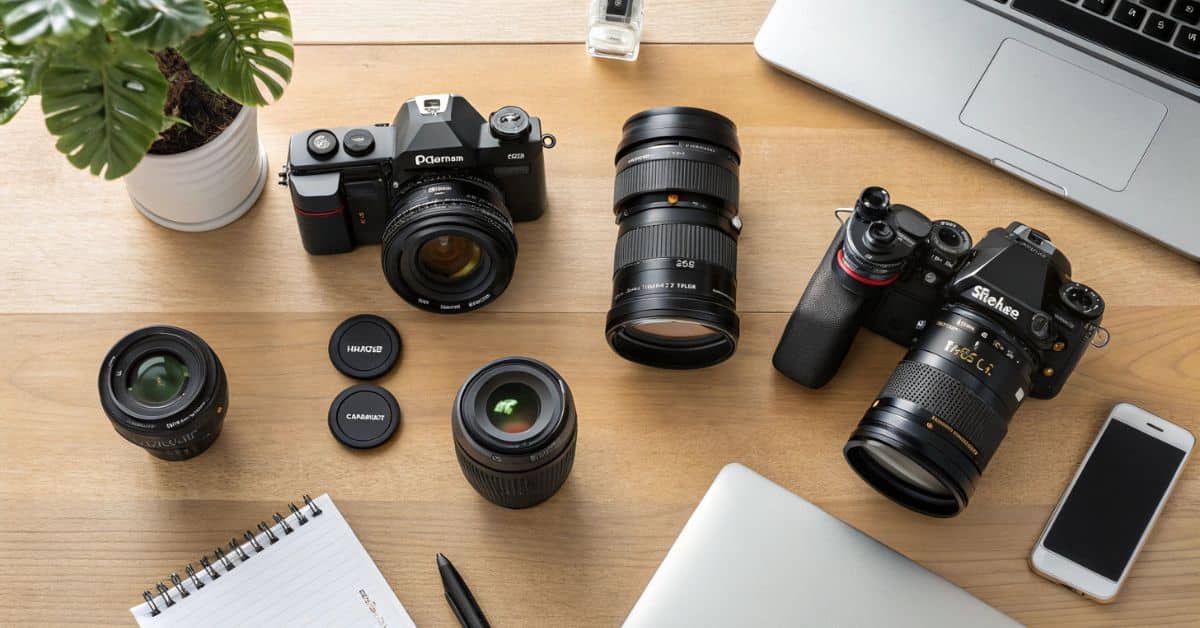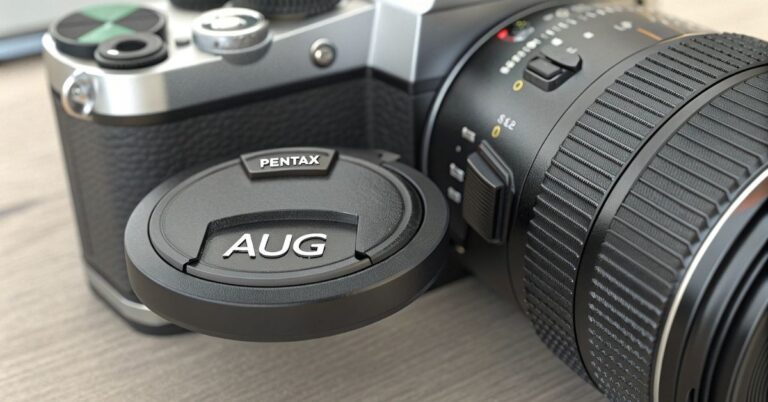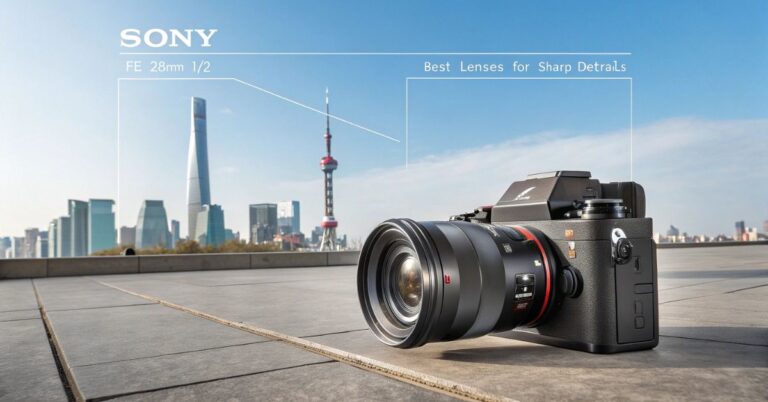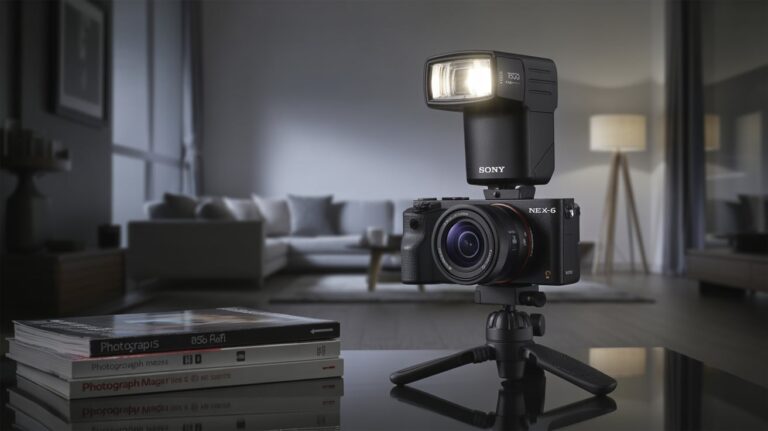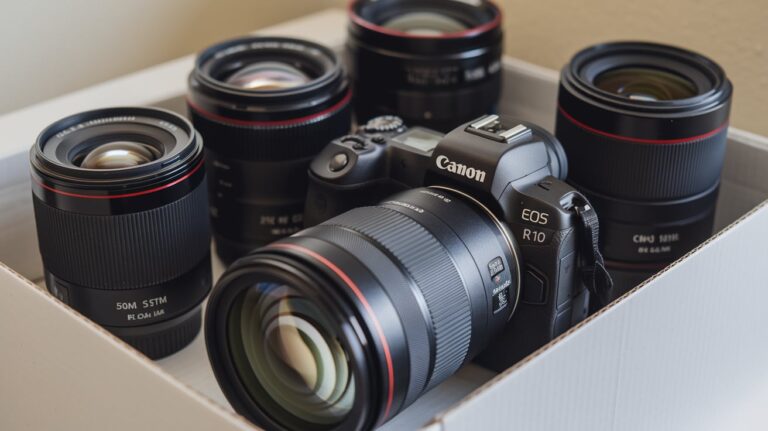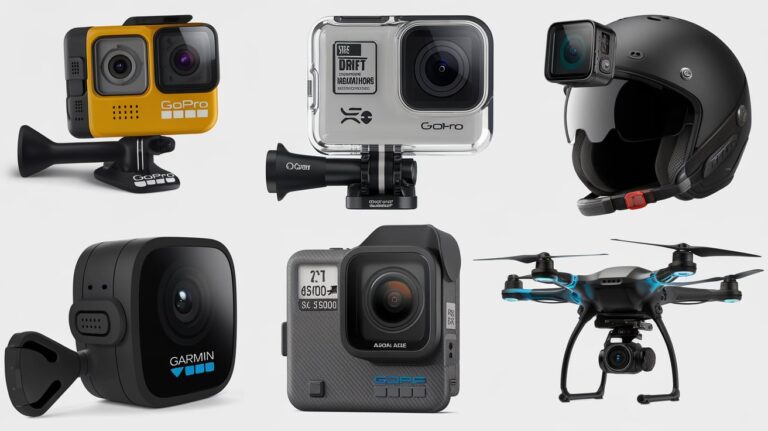Nikon F Mount Lenses Compatibility – Complate Guide for Nikon Users!
Nikon F mount lenses compatibility is a crucial topic for Nikon photographers, both beginners and professionals. Understanding which lenses work with which Nikon cameras can save time, money, and frustration. This guide explores the full landscape of Nikon F mount lenses compatibility, covering the history, types of lenses, camera compatibility, and practical advice to help you choose the right lens for your Nikon system.
History and Evolution of the Nikon F Mount
The Nikon F mount was introduced in 1959, marking one of the longest-lasting lens mount systems in photography. Its original design featured a 44mm diameter bayonet mount with a 46.5mm flange focal distance, allowing for high optical performance and easy lens interchangeability. Over time, Nikon updated the mount to accommodate new technologies and features:
- AI (Automatic Indexing): Introduced in the 1970s, AI allowed cameras to detect aperture settings automatically for better metering.
- AI-S: A refined version that improved aperture control precision.
- AF (Autofocus): Launched in the late 1980s, adding autofocus capability to lenses.
- AF-D, AF-S, AF-P: Progressively more advanced autofocus lenses featuring built-in motors and quieter focusing.
- G and E lenses: Modern lenses that use electronic aperture control and omit the aperture ring.
Each change affected Nikon F mount lenses compatibility with different camera bodies, influencing functionality like autofocus and metering.
Types of Nikon F Mount Lenses
To fully understand Nikon F mount lenses compatibility, it’s important to know the different types of F mount lenses:
- Manual Focus Lenses: Non-AI, AI, AI-S, older lenses requiring manual focusing.
- Autofocus Lenses Without Built-In Motors: AF and AF-D lenses rely on camera body motors for focusing.
- Autofocus Lenses With Built-In Motors: AF-S and AF-P lenses have silent wave or stepping motors inside for faster, quieter autofocus.
- G-Type Lenses: Lack aperture rings and use electronic aperture control.
- E-Type Lenses: Feature electromagnetic diaphragm control for more precise aperture adjustments.
- DX Lenses: Designed for crop sensor (APS-C) cameras, smaller image circle.
- FX Lenses: Designed for full-frame cameras.
- Specialty Lenses: Tilt-shift (PC-E), fisheye, and macro lenses.
Compatibility Overview: Which Lenses Work With Which Cameras?
Full-frame (FX) Nikon DSLRs
Most FX Nikon DSLRs fully support AI, AI-S, AF-D, AF-S, and G lenses; however, older lenses may have limited functionality, such as manual focusing only.
Crop-sensor (DX) Nikon DSLRs
DX cameras support most F-mount lenses, but using FX lenses on DX cameras results in a crop factor (usually 1.5x), which affects the effective focal length.
Nikon Mirrorless Cameras (Z Series)
Nikon mirrorless cameras use the new Z mount but can use F mount lenses via the FTZ adapter. Autofocus and aperture control generally work well, but some older lenses may have limitations.
Manual Focus Lenses Compatibility
Manual focus lenses work differently depending on the Nikon camera you use. Older manual lenses, called Non-AI lenses, might not work well with new Nikon DSLRs and could even damage the camera. But newer manual lenses, called AI or AI-S lenses, usually work fine. They don’t have autofocus, so you have to focus by hand, but the camera can still measure the light correctly.
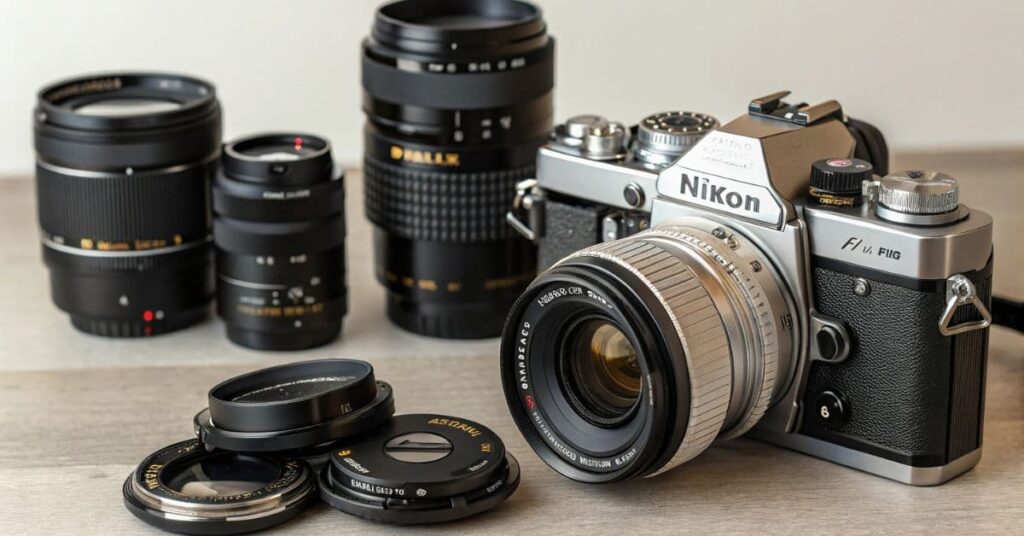
For Nikon mirrorless cameras, like the Z series, you can use manual focus lenses with a special adapter called the FTZ adapter. These lenses won’t autofocus, but you can still take great pictures by focusing manually. Many photographers like using these older lenses because they can create unique images and give more control over how the photo looks.
Common Compatibility Issues and How to Fix Them
- Autofocus Not Working:
Some Nikon cameras only support lenses with built-in autofocus motors (AF-S or AF-P). If your lens doesn’t have this motor, autofocus might not work, so check your camera’s compatibility before use. - Metering Problems:
Older manual lenses may not communicate exposure settings to the camera. You might need to set exposure manually to get correct brightness in your photos. - Mount Fit Issues:
Non-AI lenses can physically damage your camera’s mount if attached. Always use AI or AI-S lenses to ensure a proper and safe fit with Nikon F-mount cameras. - Firmware Updates:
Nikon often releases firmware updates to improve lens support. Keeping your camera’s firmware updated can fix many compatibility problems with newer lenses.
How to Choose the Right Nikon F Mount Lens for Your Camera?
Consider your camera model, sensor size (DX or FX), autofocus needs, and budget. Manual focus lenses offer vintage appeal but lack autofocus convenience. AF-S lenses are versatile for modern shooting, while specialty lenses expand creative options.
Third-party lens manufacturers like Sigma and Tamron produce Nikon F mount-compatible lenses, often with excellent quality and value.
How Firmware Updates Improve Nikon F Mount Lens Compatibility?
Firmware updates help your Nikon camera work better with different F mount lenses. Nikon makes these updates to fix problems and add support for new lenses. After updating, your camera can connect and work well with more lenses.

Updates can make autofocus faster and more accurate, fix exposure problems, and improve how the camera and lens talk to each other. If your lens is not working right, checking for a firmware update can help. Keeping your camera updated makes sure your Nikon F mount lenses work their best.
Tips to Maximize Compatibility of Nikon F Mount Lenses
Check Compatibility Before Use
Always make sure your Nikon F mount lens is compatible with your specific camera model. This prevents issues like autofocus failure or improper mounting.
Keep Camera Firmware Updated
Updating your camera’s firmware ensures it supports the latest lenses and fixes known compatibility problems. This helps your camera and lens work smoothly together.
Use Lenses Matching Autofocus System
Choose lenses that match your camera’s autofocus type, like AF-S or AF-P, for faster and more reliable focusing. Using the wrong lens type may cause autofocus to not work.
Handle Manual Focus Lenses Carefully
Manual focus lenses need you to focus by hand, so take your time and practice for sharp images. They often lack electronic communication with the camera, so exposure settings may require adjustment.
Avoid Forcing Lenses on the Mount
Never force a lens onto the camera mount if it doesn’t fit easily. Forcing can damage the lens mount or camera body, causing costly repairs.
Use Proper Adapters When Needed
When using lenses from other brands or mounts, always use a proper adapter made for Nikon F mount cameras. Keep in mind some features like autofocus might not work with adapters.
Read Manuals for Compatibility Notes
Always read your camera and lens manuals for any specific compatibility information. They often include helpful tips and warnings about which lenses work best.
FAQs:
Can I use Nikon F mount lenses on any Nikon camera?
Not all Nikon cameras work with every F mount lens. You should check if your camera supports the lens’s autofocus and metering features before using it.
What is the difference between AI, AI-S, and AF lenses?
AI and AI-S lenses are manual focus with special aperture control. AF lenses add autofocus motors for easier focusing.
Are all AF-S lenses compatible with Nikon mirrorless cameras?
Yes, AF-S lenses work with Nikon Z mirrorless cameras when used with the FTZ adapter. Autofocus functions smoothly through this adapter.
Can I use manual focus lenses on Nikon Z series cameras?
Yes, manual focus F mount lenses can be used on Nikon Z cameras with an FTZ adapter. However, autofocus will not be available.
What lenses are best for Nikon DX bodies?
DX lenses are made specifically for crop sensor Nikon cameras for better fit and performance. You can also use full-frame FX lenses, but they will crop the image.
Conclusion:
Understanding Nikon F mount lenses’ compatibility is key to getting the best results from your Nikon camera. Whether you’re using old manual lenses or newer AF-S and AF-P models, knowing what works with your specific body helps avoid problems like autofocus failure or metering issues.
By checking compatibility, using the right adapters, and keeping your camera firmware updated, you can enjoy a smooth experience with a wide range of Nikon lenses. Whether you’re a beginner or a long-time Nikon user, these simple steps will help you make the most of your gear.
